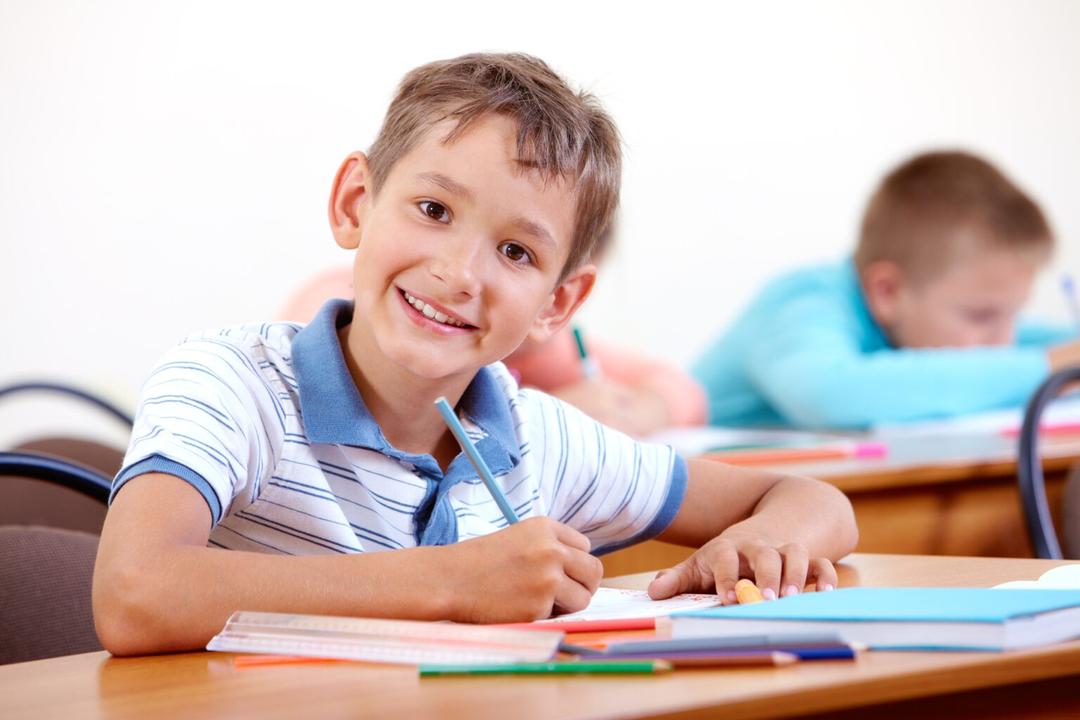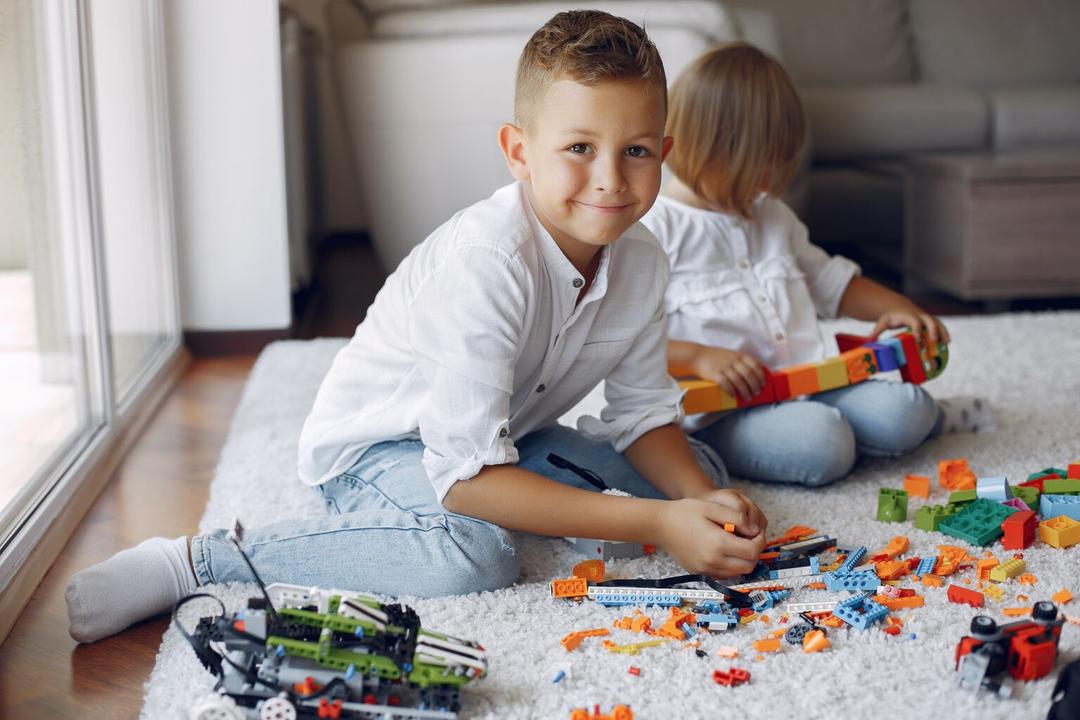Motor Skills

Outdoor Activities that Promote Physical and Sensory Development
As parents, we’re always looking for ways to help our children grow, learn, and thrive—especially when they have unique speech or occupational therapy needs. The good news? You don’t need a gym or a classroom to support their development. Nature itself is full of tools that engage the senses, build coordination, and spark meaningful connection. In this post, we’ll explore outdoor activities that promote physical and sensory development in fun, accessible ways. Each activity is therapist-approved and easy to do right in your backyard, local park, or even on your sidewalk. Why Outdoor Activities Matter for Kids with Therapy Needs Time spent outside offers so much more than fresh air. It supports development across multiple areas, including: Gross motor skills (like balance and coordination) Fine motor control (essential for tasks like writing or feeding) Sensory integration (how the brain processes touch, sound, movement, etc.) Speech and language (through exploration and interaction) Emotional regulation (nature can help calm and center kids) And best of all? Outdoor play feels like fun, not therapy. 1. Create a Backyard Obstacle Course Skills Supported: Gross motor skills, sequencing, coordination, executive functioning Obstacle courses are fantastic for building strength and motor planning—and you don’t need fancy equipment. Use things you already have: Hula hoops to jump through Pool noodles to crawl under Buckets or cones to weave around A jump rope or line of tape to balance on Make it even better: Add directions like “first crawl, then jump” to work on following multi-step commands. Use a timer for an exciting race element—or let them build their own course for problem-solving practice. Narrate their movements (“You’re crawling under the noodle!”) to build language along the way. 2. Try a Nature Scavenger Hunt Skills Supported: Sensory exploration, language development, attention to detail Kids love to explore—and a scavenger hunt taps into that natural curiosity. Make a simple list of outdoor items to find or sense: A smooth rock Something that smells nice A crunchy leaf A soft flower Something that makes a sound Boost the benefits: Ask open-ended questions like, “What does that flower feel like?” or “Can you describe the sound you hear?” Let your child take photos or draw their findings afterward to support recall and storytelling. You can even theme your hunts by color, texture, or season. This is a great way to build vocabulary while also encouraging sensory input. 3. Play with Sidewalk Chalk Skills Supported: Fine motor control, creativity, hand-eye coordination, spatial awareness Chalk play isn’t just colorful fun—it builds important muscles and skills. Drawing, tracing shapes, or even copying letters or numbers gives kids tactile feedback and fine motor practice. Fun ideas to try: Draw a hopscotch grid to practice jumping and balance Make a “chalk road” for toy cars to follow Create silly faces or story scenes together Write out words or letters and practice naming them Therapist tip: Encourage a proper pencil grip while holding chalk and use words like “above,” “next to,” and “under” to build spatial concepts and language. 4. Dive Into Water Play Skills Supported: Tactile processing, bilateral coordination, sensory regulation Water play is a favorite for a reason—it’s soothing, versatile, and fun for all ages. Whether it’s a water table, hose, kiddie pool, or just a few buckets, it’s an excellent way to promote physical and sensory development. Simple ideas include: Pouring water from cup to cup Squeezing sponges into containers Fishing for toys in colored water Adding bubbles, shaving cream, or ice cubes for varied textures Why it works: Water provides calming sensory input, which can help kids regulate their emotions. At the same time, activities like pouring and squeezing strengthen hand muscles needed for writing or eating. 5. Visit the Playground with Purpose Skills Supported: Core strength, motor planning, social skills, sensory input Playgrounds are packed with opportunities for therapeutic growth. Swings stimulate the vestibular system (balance), slides support body awareness, and climbing structures build coordination and strength. Make the most of your visit: Narrate what your child is doing: “You’re climbing up the ladder. That’s so strong!” Practice turn-taking and greetings with other kids Turn climbing into a “mission” to retrieve a toy or reach a goal Bonus tip: If your child has sensory sensitivities, visit during quieter times to reduce overwhelm. 6. Start a Kid-Friendly Garden Skills Supported: Fine motor skills, responsibility, sensory exploration, patience Gardening is rich in sensory experiences—from digging in soil to smelling herbs and watching plants grow over time. Even young children can help with watering, planting seeds, or pulling weeds. Why kids love it (and therapists do too): Dirt offers grounding, calming sensory input Picking up small seeds builds fine motor control Watching plants grow teaches patience and consistency Ideas to try: Grow quick-sprouting seeds like sunflowers, green beans, or herbs in a pot if you don’t have a yard. 5 Quick Tips for Outdoor Success Follow your child’s lead—their interests will guide more meaningful play. Narrate experiences to support vocabulary and comprehension. Use simple directions and break down tasks into manageable steps. Take breaks if your child becomes overstimulated—sensory overload can happen outdoors, too. Celebrate small wins and don’t worry about doing everything perfectly. When to Reach Out for Extra Support If you notice your child struggles with coordination, seems easily overwhelmed by sounds or textures, or has delayed communication milestones, it might be time to check in with a therapist. At TeleSesh, our licensed speech and occupational therapists work virtually with families to create fun, personalized programs that support your child’s development—in ways that fit your routine. Learn more about our therapy services The Takeaway Outdoor play isn’t just a break from the indoors—it’s a vital tool for helping kids grow strong, confident, and connected to the world around them. Whether it’s drawing with chalk or digging in the garden, every little movement builds the skills they need to succeed. So grab a hat, step outside, and let nature be your child’s favorite therapist.

4 Ways to Work on Your Child’s Occupational Therapy Skills During The Holiday Break
Occupational therapy is designed to help people overcome setbacks related to poor motor skills. These setbacks may make it difficult for children to perform well in school, and occupational therapy can work on skills children need, such as writing and typing or tying their shoes.Occupational therapy focuses on fine and gross motor skills and motor planning, and it can also help children who struggle with sensory processing and self-regulation.During the school year, children get plenty of fine motor practice, but this practice can decrease during the holidays. The good news is, there are plenty of ways you can engage your child in occupational therapy skills during the holiday break.1. Cooking and bakingThe holidays are all about food and family, and there’s no better way to spend time with your family than while you’re making food. Measuring, mixing, and pouring ingredients requires a mix of fine and gross motor skills, and it’s the perfect time for your child the practice. It’s important to be patient with them as they work on honing these skills. So, it may be beneficial to start with something small such as making hot chocolate and moving up to baking cakes or helping with Christmas dinner as your child’s motor skills improve.2. Wrapping presentsAn ongoing holiday project is the act of wrapping presents. Instead of putting the burden of wrapping presents on one person, consider making it a family affair. Wrapping presents includes the use of scissors, tape, and fine motor planning. It also requires patience and self-regulation, so it is one of the best holiday projects your child can engage in.3. Playing in the snowIf the weather is nice, don’t hesitate to spend some time outside. There are plenty of ways you can practice fine motor skills outside, whether you are in an area that snows or an area that doesn’t. If you are in a place where it doesn’t snow, consider collecting nature items and turning them into a collage or a tabletop sensory table. If you are in a location that snows, consider making snowballs and throwing them at targets. Both of these activities are great for hand-eye coordination, and they’re a good way to get your child outside for a couple of hours every day.4. Writing Christmas cardsFinally, have your child practice their handwriting skills by writing Christmas cards and a letter to Santa. Children can practice their creativity and their handwriting by decorating the letters in different styles. The best part about this practice is it is another one that your child can do consistently. Writing holiday cards for the whole family, addressing envelopes, and eventually stamping them and sticking them in the mailbox engages a wide variety of occupational skills.Practicing occupational therapy skills doesn’t have to be boring. In fact, it can be included in your child’s everyday life. Rather than sitting them down with a set of workbooks, you can incorporate occupational therapy practice into the holiday festivities. Allow your child to work in the kitchen with you, help wrap presents, and even play in the snow.The holiday season is also a good time to consider online occupational therapy with a certified counselor. Programs like Connect Teletherapy can connect you with a virtual therapist, so your child can practice their skills without even leaving their home.

Tips to Help your Child GRASP the Pincer Grip
The coordination of using your thumb and index finger to perform tasks, also known as the pincer grip, is a crucial part of fine motor development. Adults use this grip for all kinds of things, including buttoning shirts, picking up tiny objects, and even using a pencil. This pincer grip exercises is usually considered a baby skill, but toddlers and older children need just as many opportunities to practice the grip as well.Some children have delays in developing the pincer grip due to the increased reliance on technology at a younger age. Unfortunately, this lack of development can lead to difficulty grasping a pencil down the line. It can become a concern for your child’s hand, finger, and wrist muscles.Here are some activities on how to help baby with pincer grasp.1. Threading beadsI bet you didn’t think there was an occupational reason for threading popcorn onto a string, huh? While this traditional holiday task is better suited for slightly older children, toddlers also enjoy practicing their grip in this way. Children get the hang of threading beads onto a string by their second birthday. These pincer grasp activities task not only reinforces the pincer grasp but also helps with hand-eye coordination. There are many bead kits out there for children, or you can make your own with wide beads and thick yarn. this is how to help baby with pincer grasp. This is one example on how to practice pincer grasp.2. Transferring objectsWhile it may not seem like a lot of fun to you, transferring objects from one bowl to another can be very engaging for toddlers and small children. It helps in pincer grip development. The act of transferring small beans or grains of rice with the spoon from one bowl to another takes quite a bit of concentration and coordination to master. While this game is simple on the surface, it allows your child to strengthen their hands, fingers, and wrist muscles. Such pincer grip activities are a must to involve for your children.3. ColoringFinally, one of the best pincer grasp activities to practice the pencil grip is to hold pencil-shaped objects. Children go through several stages with their pincer grip development as their pincer grip gets better. At 18 months, your child should be able to grasp a crayon and scribble on their own. By two years old, they may be able to imitate vertical lines and color inside a large sheet of paper. By three years old, your child should be grasping their crayon with their thumb and first finger rather than using a fist. And by four, their drawings should look identifiable.A child should have a modified tripod grasp mastered by their fourth birthday. If they are having trouble at this stage of development, then it may be necessary to invest in occupational therapy. There are many pincer grip activities & ways to engage in therapy, whether you prefer an in-person therapy session or a remote lesson for better flexibility. Online therapists, such as Connect Teletherapy, offer many remote learning options, pincer grip exercises, including Skype and video calls, to ensure your child gets the therapy they need.

Fine Motor Skills
Fine motor skills are necessary for children to perform adequately in a classroom setting. These skills include holding and rotating a pencil, coloring, and even going to the restroom unassisted. If a child lacks these skills, it can make classroom tasks incredibly difficult and lead to frustration from all parties. To avoid your child falling too far behind with their fine motor skills, it’s important to know what you can expect at different ages.Fine Motor Skills for Elementary and Middle School ChildrenPre Elementary (4-5 years old)At 4-5 years old, a child should be able to cut along lines continuously, coordinate hands to brush teeth or hair, copy circles, crosses, and squares, and be able to hold a pencil with a tripod or three-point grip. A child should also be able to color inside lines, write their name, copy numbers one through five, and be independently attempting to draw a range of different pictures. At home, your child should have no problem dressing themselves, opening zip lock bags or lunch boxes, or completing puzzles with up to twelve interlocking pieces.Early Elementary (5-6 years old)At the early elementary age, a child should be able to cut out simple shapes, write numbers one through ten independently, and generate letters without assistance. The child should be comfortable writing with a three-finger grip, using a knife or fork for softer foods, and complete puzzle up to twenty pieces.Middle Elementary (6-7 years old)The middle elementary stage is a stage where a child is mostly improving on pre-established skills and developing pencil control and endurance. The child should be able to draw detailed pictures with recognizable objects, build with Legos, tie shoelaces, and be able to write on lines. If a child is having problems dressing, completing puzzle toys, or independently opening zip lock bags, then there is a potential cause for concern.Late Elementary (7-8 years old)As a child nears eight years old, they should be able to write neatly while holding a pencil with a three-finger grip and control the pencil from their fingers, not their wrist. They should also be able to maintain legible handwriting for the length of a piece of paper, form letters and numbers correctly, and be able to cut neatly around a shape. If a child is struggling with building with legos or other blocks, completing complex puzzles, or tying shoelaces, then there may be a need for further development on these fronts.When it comes to early childhood development, there is a lot of variation between children. Sometimes a child may excel exponentially in one category, such as writing or drawing, and maybe a little further back on the scale when it comes to kinesthetic skills. While many of these skills are practiced inside the classroom, if you find that a child is making little to no progress over a few months, it may be necessary to seek an occupational therapist to provide individual and unique resources for the child.If you’re looking for a therapy model that can fit easily into a busy schedule or provide your child with quality help despite social distancing requirements, then Connect Teletherapy is a therapy program designed to make therapy accessible to you and your child no matter what the circumstance.
